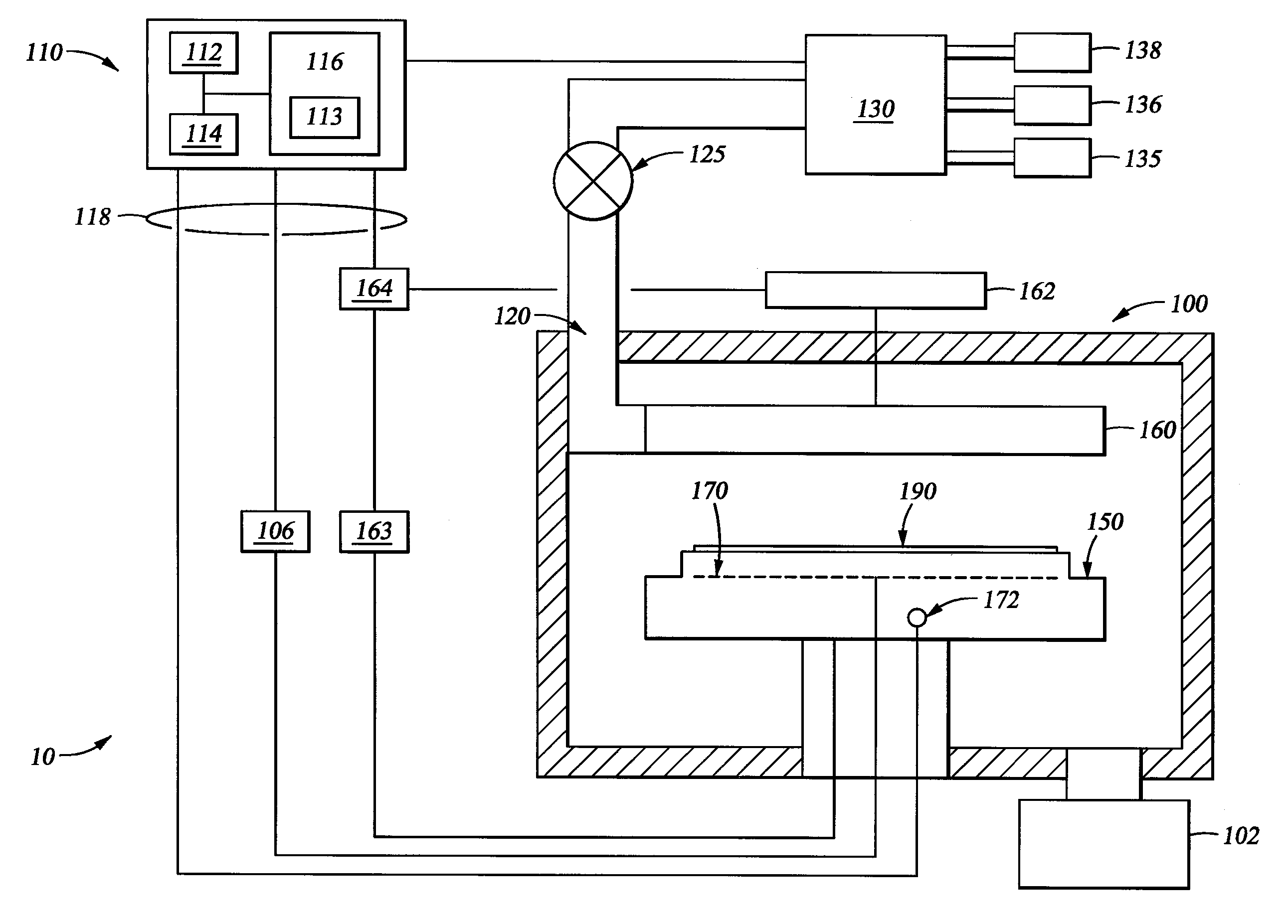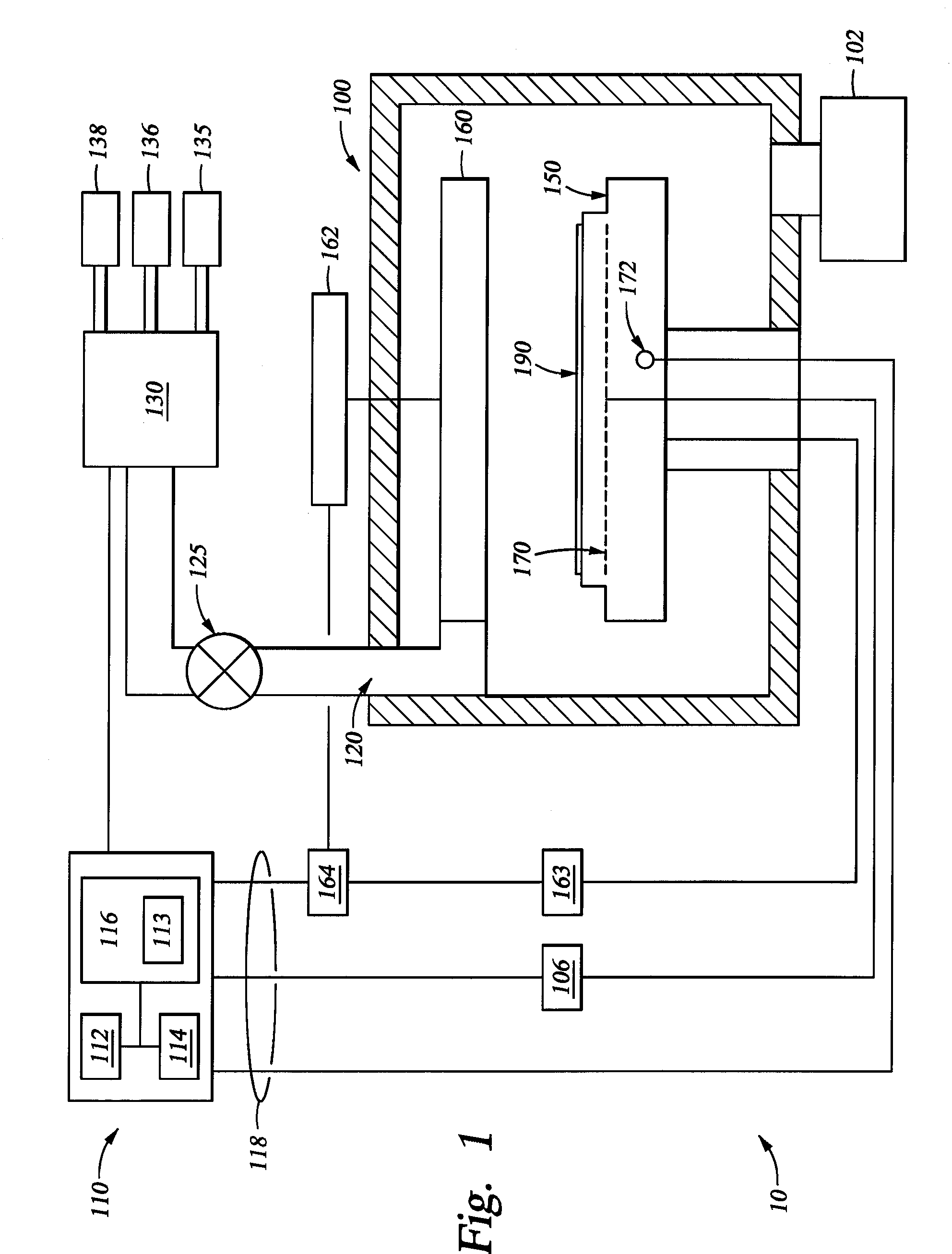Apparatus for integration of barrier layer and seed layer
a technology of which is applied in the field of apparatus for depositing barrier layer and seed layer, can solve the problems of compromising device integrity, affecting the integrity of devices, and requiring a large amount of ongoing effor
- Summary
- Abstract
- Description
- Claims
- Application Information
AI Technical Summary
Benefits of technology
Problems solved by technology
Method used
Image
Examples
example 1
[0078] A TaN layer was deposited over a substrate by atomic layer deposition to a thickness of about 20 Å. A seed layer was deposited over the TaN layer by physical vapor deposition to a thickness of about 100 Å. The seed layer comprised either 1) undoped copper deposited utilizing a target comprising undoped copper, 2) a copper alloy comprising aluminum in a concentration of about 2.0 atomic percent deposited utilizing a copper-aluminum target comprising aluminum in a concentration of about 2.0 atomic percent, 3) a copper alloy comprising tin in a concentration of about 2.0 atomic percent deposited utilizing a copper-tin target comprising tin in a concentration of about 2.0 atomic percent, or 4) a copper alloy comprising zirconium in a concentration of about 2.0 atomic percent deposited utilizing a copper-zirconium target comprising zirconium in a concentration of about 2.0 atomic percent. The resulting substrate was annealed at a temperature of about 380° C. for a time period of a...
example 2
[0080] Copper-aluminum alloy films comprising about 2.0 atomic percent of aluminum were deposited on different substrates by physical vapor deposition utilizing a copper-aluminum target comprising aluminum in a concentration of 2.0 atomic percent. The resulting substrates included 1) a copper-aluminum layer deposited to a thickness of about 50 Å over an ALD TaN layer, 2) a copper-aluminum layer deposited to a thickness of about 50 Å over about a 100 Å Ta layer, 3) a copper-aluminum layer deposited to a thickness of about 100 Å over an ALD TaN layer, 4) a copper-aluminum layer deposited to a thickness of about 100 Å over a silicon nitride (SiN) layer, and 5) a copper-aluminum layer deposited to a thickness of about 100 Å over a silicon oxide layer. The resulting substrates were annealed at a temperature of about 380° C. for a time period of about 15 minutes in a nitrogen (N2) and hydrogen (H2) ambient. Scanning electron microscope photographs showed that there was no significant aggl...
example 3
[0081] Copper-aluminum alloy films comprising about 2.0 atomic percent of aluminum were deposited by physical vapor deposition utilizing a copper-aluminum target comprising aluminum in a concentration of 2.0 atomic percent to either a 50 Å or 100 Å thickness over an ALD TaN layer. The resulting substrates were annealed at a temperature of about 380° C., about 450° C., or about 500° C. for a time period of about 15 minutes in a nitrogen (N2) and hydrogen (H2) ambient. Scanning electron microscope photographs showed that there was no significant agglomeration of the copper-aluminum alloy for substrates annealed at temperatures of about 380° C. or about 450° C. The copper-aluminum alloy showed some dewetting began to occur for substrates annealed at a temperature of about 500° C.
PUM
| Property | Measurement | Unit |
|---|---|---|
| temperature | aaaaa | aaaaa |
| temperature | aaaaa | aaaaa |
| temperatures | aaaaa | aaaaa |
Abstract
Description
Claims
Application Information
 Login to View More
Login to View More - R&D
- Intellectual Property
- Life Sciences
- Materials
- Tech Scout
- Unparalleled Data Quality
- Higher Quality Content
- 60% Fewer Hallucinations
Browse by: Latest US Patents, China's latest patents, Technical Efficacy Thesaurus, Application Domain, Technology Topic, Popular Technical Reports.
© 2025 PatSnap. All rights reserved.Legal|Privacy policy|Modern Slavery Act Transparency Statement|Sitemap|About US| Contact US: help@patsnap.com



